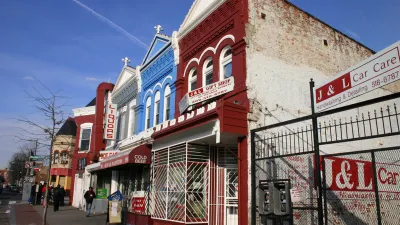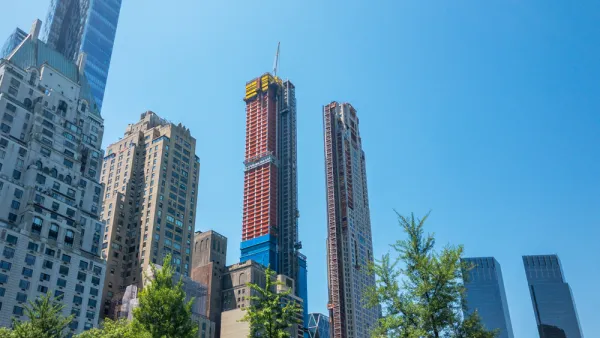Limiting development has been a powerful tool for anti-gentrification activists, but have these policies had counter-productive effects?

In a piece for The Atlantic, Jacob Anbinder challenges the popular thesis that new housing construction in historic neighborhoods causes gentrification, calling the concept misguided and pointing to declining rents during 2020 as proof.
Since the mid-20th century, housing activists and politicians have painted development as broadly detrimental to affordable housing, arguing that this "gentrification-industrial complex" is a key driver of displacement and rising housing costs. This "growth revolt" brought together stakeholders from across the political spectrum, pitting wealthy homeowners and low-income renters against developers. For once, "nature enthusiasts, architectural historians, homeowners, and rock-ribbed socialists" could all agree on something.
"This anti-growth partnership presumes that the interests of the landed and the landless are aligned—that a policy of more tightly regulated development can both generate wealth for those who own property and redistribute it to those who don’t."
The 1970s and 1980s saw the growth of design review boards, height limits, and other density restrictions that continue to shape urban development today. Anbinder argues that these cosmetic changes, which treat luxury construction as a cause rather than consequence of neighborhood change and gentrification, don't acknowledge the true causes of rising housing costs. In his assessment, slow growth policies may have in fact exacerbated the current housing crisis by limiting the number of available units. The difference, he writes, is in ownership. "The telltale sign of a neighborhood in transition isn’t a yoga studio or a high-rise apartment building. It is an old rowhouse, meticulously renovated."
FULL STORY: The Pandemic Disproved Urban Progressives’ Theory About Gentrification

Analysis: Cybertruck Fatality Rate Far Exceeds That of Ford Pinto
The Tesla Cybertruck was recalled seven times last year.

National Parks Layoffs Will Cause Communities to Lose Billions
Thousands of essential park workers were laid off this week, just before the busy spring break season.

Retro-silient?: America’s First “Eco-burb,” The Woodlands Turns 50
A master-planned community north of Houston offers lessons on green infrastructure and resilient design, but falls short of its founder’s lofty affordability and walkability goals.

Test News Post 1
This is a summary

Analysis: Cybertruck Fatality Rate Far Exceeds That of Ford Pinto
The Tesla Cybertruck was recalled seven times last year.

Test News Headline 46
Test for the image on the front page.
Urban Design for Planners 1: Software Tools
This six-course series explores essential urban design concepts using open source software and equips planners with the tools they need to participate fully in the urban design process.
Planning for Universal Design
Learn the tools for implementing Universal Design in planning regulations.
EMC Planning Group, Inc.
Planetizen
Planetizen
Mpact (formerly Rail~Volution)
Great Falls Development Authority, Inc.
HUDs Office of Policy Development and Research
NYU Wagner Graduate School of Public Service




























